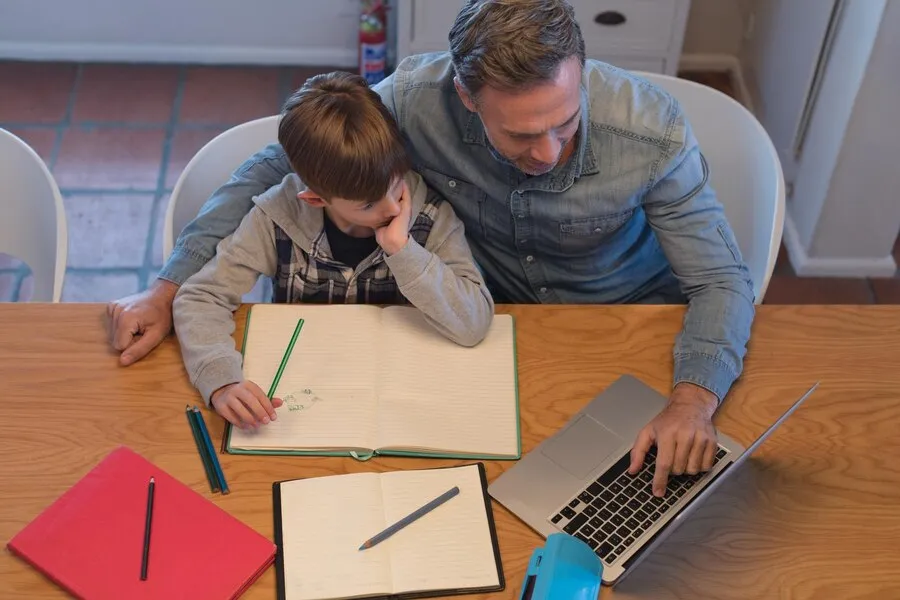Table of Contents
Key Takeaways:
- Wall maps provide a visual and interactive way to learn geography.
- They enhance spatial thinking and memory retention.
- Wall maps make learning fun and engaging for all ages.
- They are versatile educational tools that can be used in various learning environments.
Introduction
Learning geography is essential to education, helping individuals understand the world around them. Among the various tools available for teaching geography, wall maps stand out for their ability to provide a visual and interactive learning experience. Whether used in classrooms, homes, or offices, wall maps can make the study of geography more engaging and effective. This article explores why wall maps are great for learning geography and how they can enhance the learning process for individuals of all ages.
Visual and Interactive Learning
One of the primary reasons wall maps are advantageous for learning geography is their visual and interactive nature. A wall map offers a significant, detailed representation of geographical areas, making it easier for learners to visualize the spatial relationships between different locations. Resources like Thomas Guides can provide comprehensive wall maps as excellent educational tools for visual learning.
Wall maps allow learners to physically point to and interact with different regions, fostering a more hands-on approach to studying geography. This form of interaction helps break down complex geographical concepts into more understandable visual elements. Using markers, pins, or even sticky notes, students can highlight specific areas, trace routes, and mark important geographical features, making the learning process engaging.
Enhancing Spatial Thinking
Spatial thinking is understanding and remembering the spatial relationships among objects. Wall maps are excellent tools for enhancing this skill. When students observe and study wall maps, they develop a sense of how different geographical elements are related to one another in space. This spatial awareness is crucial in understanding distance, direction, and scale concepts.
For example, when examining a wall map, students can see the proximity of countries, mountain ranges, rivers, and other natural features. This helps them grasp how these features impact human activities, such as trade routes, climate, and population distribution. By consistently engaging with wall maps, learners can improve their spatial thinking abilities, valuable in geography and fields like architecture, engineering, and urban planning.
Memory Retention
The visual appeal of wall maps plays a significant role in memory retention. Studies have shown that visual aids can enhance memory recall by helping the brain process and store information more effectively. When students study geography using wall maps, they are more likely to remember the locations and characteristics of different places.
Additionally, the repetitive nature of using wall maps for learning can reinforce memory retention. Students constantly reinforce their understanding of geographical facts and relationships by referring to a wall map. This repeated exposure solidifies their knowledge and makes it easier to recall information during tests and real-world applications.
Fun and Engaging
Learning geography can sometimes be daunting, but wall maps can transform it into a fun and engaging experience. The large and colorful representations on wall maps capture students’ attention and imagination. Students can explore the world from the comfort of their classroom or home, making the learning process more enjoyable.
Teachers and parents can incorporate various activities using wall maps to keep learners engaged. For instance, they can organize scavenger hunts where students find and mark specific locations on the map. They can also use the map to tell stories about different regions, cultures, and historical events, making geography come alive. By turning geography lessons into interactive and enjoyable experiences, wall maps help foster a love for learning the subject.
Versatile Educational Tools
Wall maps are versatile educational tools used in various learning environments. They can be central reference points for lessons, discussions, and classroom activities. Teachers can use wall maps to illustrate geographical concepts, show the locations of historical events, and explain global issues such as climate change, migration, and natural disasters.
Wall maps can be valuable resources for homeschooling or supplementary education. Parents can use them to assist with homework, plan educational trips, and encourage curiosity about the world. They can also provide helpful geographical insights for business planning, logistics, and travel arrangements, even in offices and professional settings.
Furthermore, wall maps can be customized to suit different educational needs. A wide range of options are available from physical maps showing natural features to political maps highlighting countries and borders. This versatility makes wall maps suitable for learners of all ages and levels, from elementary school students to college graduates. In addition to their educational uses, wall maps can foster interactive learning by allowing students to mark locations, trace routes, or even add pins to places of interest. Digital advancements have also introduced interactive wall maps that integrate technology, enabling users to access real-time data or explore specific regions in greater detail. This combination of visual and tactile engagement enhances spatial awareness and retention of information. For younger learners, colorful and illustrated wall maps can spark interest in geography and world cultures, making learning fun and engaging. Ultimately, wall maps provide a hands-on, dynamic way to explore complex topics, making them a valuable asset across various educational settings.
Also Read: 4 Ways to Make the Most of Your Safety Orientation Course
Final Thoughts
Wall maps are invaluable for learning geography, providing a visual and interactive way to explore the world. They enhance spatial thinking and memory retention, making geography lessons more effective. Their engaging and fun nature captures learners’ interest, fostering a love for the subject. Additionally, wall maps are versatile and can be adapted to various educational settings, making them suitable for many learners. Whether used in classrooms, homes, or offices, wall maps are essential resources for anyone looking to understand and appreciate the world around them.




